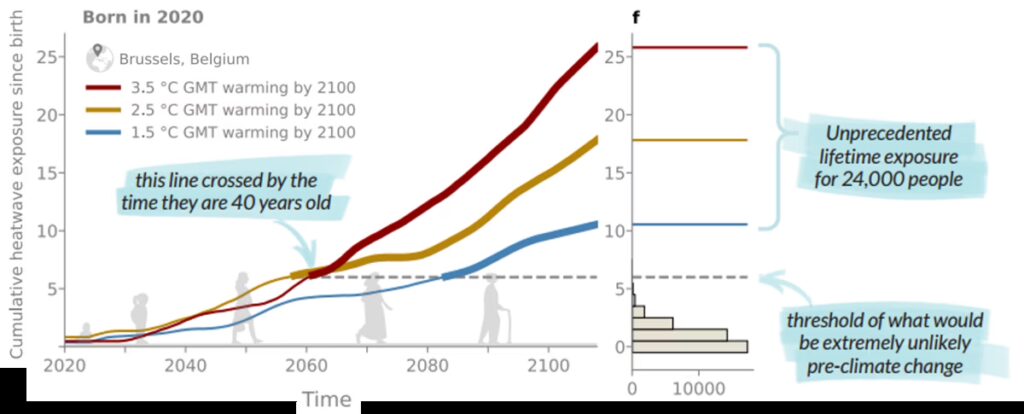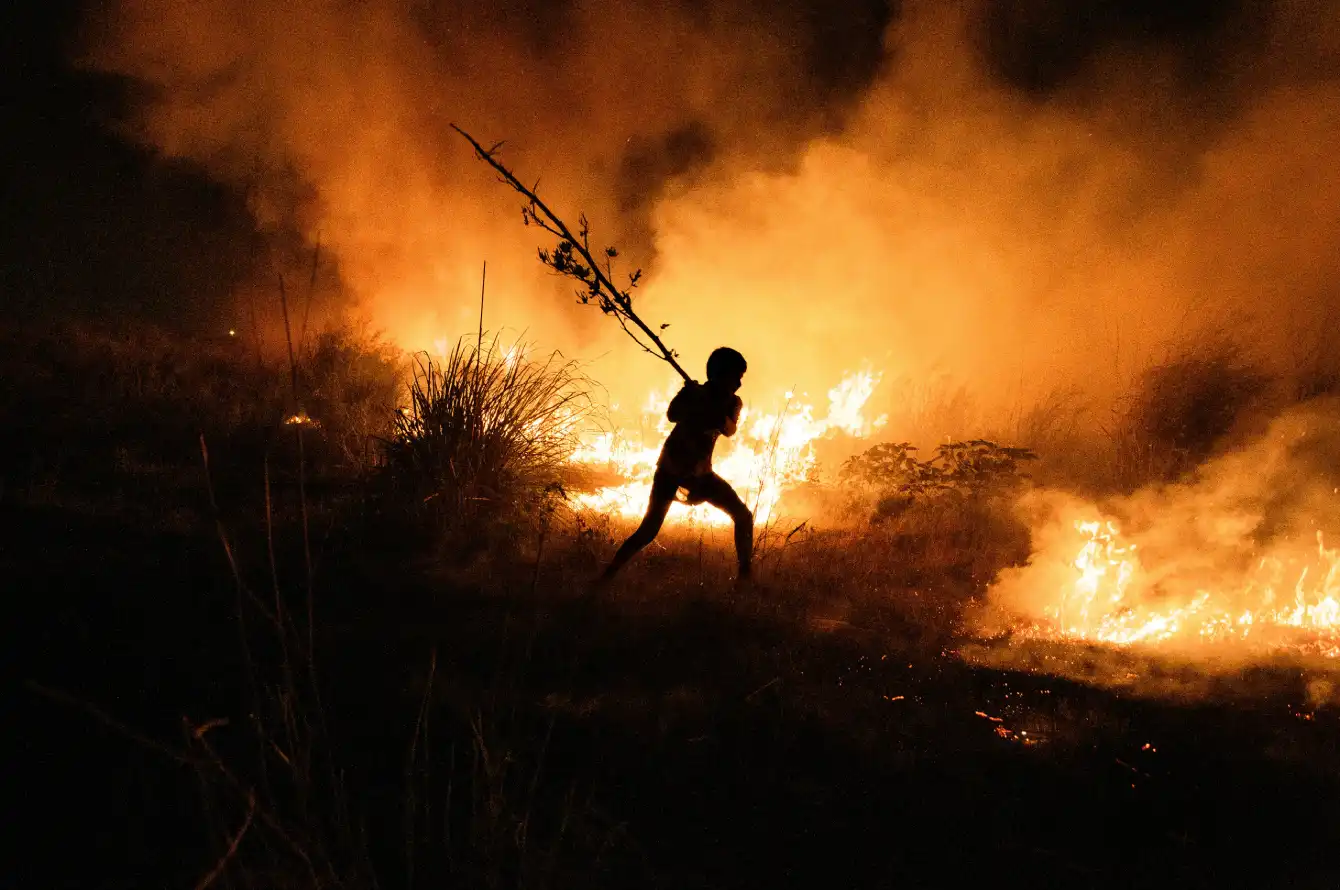Children born in 2020 will experience significantly more climate extremes over their lifetimes than previous generations, even if global warming is limited to internationally agreed targets. That is the conclusion of a new scientific study published in Nature.
The research was conducted by a international team researchers led by Dr. Luke Grant and Prof. Wim Thiery of Vrije Universiteit Brussel. It used advanced climate modelling combined with demographic data to project exposure to six types of extreme climate events: heatwaves, crop failures, droughts, river floods, wildfires, and tropical cyclones. It compared the lifetime exposure of individuals born in 2020 to those born in 1960 under a range of global warming scenarios.
Heatwaves
The current environmental policies project a global temperature increase of 2.7°C above pre-industrial levels by 2100. Under that policy children born in 2020 are likely to experience double the number of heatwaves and droughts in their lifetimes compared to those born in 1960.
In the worst-case scenario of 3.5°C warming, 92% of today’s children could be exposed to extreme heatwaves never before experienced by previous generations. Furthermore 29% of those born in 2020 would be exposed to unprecedented crop failures, while 14% would experience extreme river flooding. The frequency and intensity of wildfires and tropical cyclones would also rise, though these impacts vary regionally.

© Grant et al., 2025, Nature
Inequality
Importantly, the research emphasizes that these risks are not evenly distributed. Populations with higher socioeconomic vulnerabilities are more likely to face increased exposure to climate extremes. For instance, 95% of the most deprived populations born in 2020 will experience unprecedented exposure to heatwaves, compared to 78% among the least deprived.
The researchers stress the urgency of implementing deep and sustained reductions in greenhouse gas emissions to mitigate these risks for current and future generations. Limiting warming to 1.5°C, as targeted under the Paris Agreement, could significantly reduce these risks, potentially protecting hundreds of millions of children. According to the study, this would shield 613 million children born between 2016 and 2020 from unprecedented exposure to extreme heatwaves.
Researchers involved say the findings provide a quantifiable illustration of intergenerational climate inequality. While the study does not prescribe policy, it highlights the potential benefits of emission reductions and the scale of exposure that could be avoided with more ambitious climate action.
The study used a methodology that overlays socioeconomic data with physical climate models to calculate cumulative lifetime exposure to climate extremes. It is among the first to link detailed age-cohort projections to multiple types of extreme weather globally. The paper, titled “Intergenerational Inequities in Exposure to Climate Extremes”, was published in the journal Nature on May 7, 2025.



